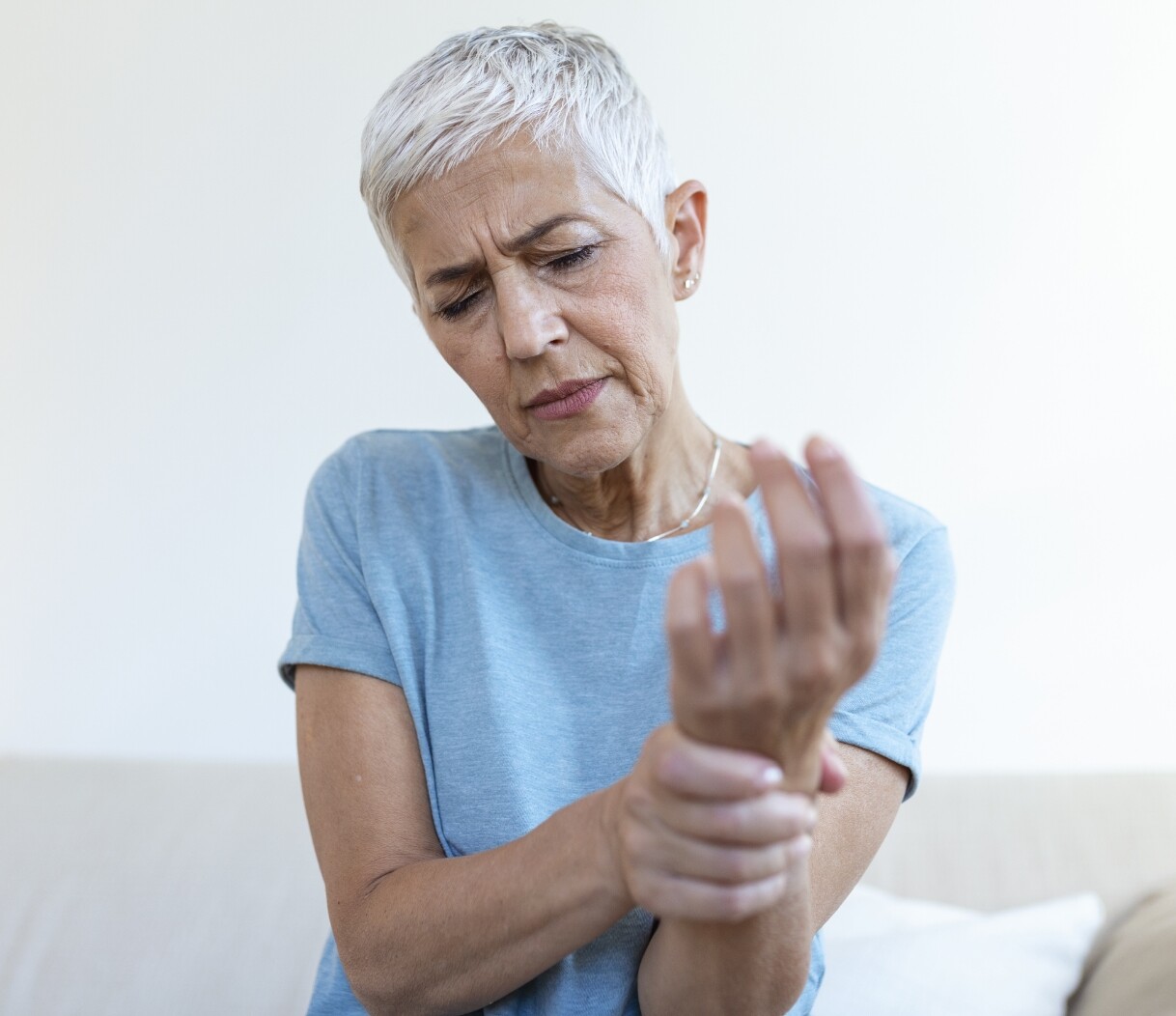Ganglion Cysts
An Orthopaedic surgeon who will give the best care possible.
Ganglion cysts are fluid-filled lumps that develop in the hand and wrist. They grow from joints into the tissues that surround joints. They can put pressure on surrounding structures such as ligaments, tendon sheaths, nerves and vessels. Although they most commonly occur close to the tendons on the back of the wrist, Ganglion cysts can also develop at the base of the fingers, and sometimes at the elbow or lower limb near the knee (known as a Baker’s cyst), ankles, or feet.
Ranging in size from that of a pea to a few centimetres in diameter, Ganglion cysts may quickly appear, change size, and disappear. They are mostly harmless, non-cancerous, and do not often require treatment.
Sometimes a Ganglion cyst can press on a nerve, vessel or tendon; or interfere with joint function. If a cyst becomes painful or begins to impede hand or wrist mobility, there are a number of treatment options available to resolve the issue.


Symptoms of Ganglion Cysts
Most people notice a soft lump or swelling that may change in size or even disappear and reappear over time.
Although many Ganglion cysts don’t produce any symptoms, some can become painful if they grow large enough to put pressure on a joint’s nerves.
Sometimes this pain gets worse when moving nearby joints. The affected tendon may also cause a sensation of muscle weakness in the hand or wrist. Shining a light on the cyst to assess translucency can help determine if it is full of water or something else.
Causes and Risk Factors
The exact reason why Ganglion cysts develop is unknown.
It’s theorised that they may be part of the body’s response to trauma or overuse, or perhaps the result of small tears in the tendon membrane that cause lubricating fluid to leak.
That being said, certain factors are believed to increase the risk of developing Ganglion cysts. These risk factors include:
- Gender and age – Ganglion cysts most commonly develop in women between 15 and 40 years of age.
- Joint or tendon injury – Previous injuries to joints or tendons may increase risk.
- Osteoarthritis – People with arthritis in their finger joints may develop mucous cysts.
- Stress – Gymnasts who repeatedly apply stress to the hands and wrists commonly develop this condition.

How are Ganglion Cysts Diagnosed?
If you suspect you have a Ganglion cyst forming, it’s important to get it checked out to ensure it’s not a symptom of another illness.
Orthopaedic surgeon Dr James McLean can assess your lump to determine if it is a ganglion or something else.
During your appointment, Dr McLean will find out your medical history, discuss your symptoms, and perform a physical examination of the affected area. During this exam, he will apply gentle pressure to identify any tenderness.
Generally, this physical examination is all that is needed. However, other tests may sometimes be required to assist with diagnosis. These may include:
- Using a syringe to remove some fluid from the cyst
- An ultrasound to view how solid the cyst is
- An MRI to examine cyst/s that are not visible and assess the relationship of a ganglion to an adjacent nerve, vessel and/or tendons
- X-ray tests are sometimes used to rule out other conditions, such as arthritis.

Ganglion Cyst Treatment Options
Ganglion cysts are not cancerous and often disappear eventually. You may be simply monitored to ensure no unusual changes occur.
In the past, Ganglion cysts were ‘treated’ by slamming a heavy object on them. This is not a recommended management and could cause further injury.
If a cyst is not causing any pain or interfering with movement, Dr McLean may advise observation over time. Because Ganglion cysts are not cancerous and often disappear eventually, you may be simply monitored to ensure no unusual changes occur.
As activity often causes a Ganglion cyst to grow, sometimes immobilisation is recommended. A wrist brace or splint may aid with this. If a cyst decreases in size, Dr McLean may prescribe a gentle physiotherapy regime to strengthen the wrist.
Another non-surgical option is an aspiration. This involves numbing the area and puncturing the cyst with a needle so fluid can be withdrawn. Sometimes, a steroid is injected into the lesion in an attempt to decrease its size and stimulate resorption. This technique is rarely successful. The ganglion will most likely grow back as the ‘root’ cause is not removed.
If the above methods don’t resolve the issue, surgery may be recommended.
Surgery for Ganglion Cysts
Surgery involves removing the cyst and the related joint capsule or tendon sheath.
If a Ganglion cyst doesn’t respond to non-surgical treatment, returns after aspiration, or is causing compressive symptoms such as pain, Dr McLean may recommend surgery. Surgery involves removing the cyst and the related joint capsule or tendon sheath. Known as excision, this procedure is performed under general anaesthetic using minimally-invasive techniques wherever possible. Patients are treated in an operating theatre in a hospital and usually return home on the day of surgery.
Some tenderness and discomfort may occur after surgery, and you may be fitted with a splint for up to 2 weeks (depending on the position and size of the joint capsular repair required). Depending on the location and size of the excised cyst, full recovery can take anywhere between 2 to 8 weeks.
Dr McLean will monitor your recovery and guide you as you return your hand or wrist to full function. Some light exercises may be prescribed to help your hand or wrist heal and strengthen.
How Dr James McLean can help
Dr James McLean provides consultation and various treatments for a wide variety of hand and wrist conditions in Adelaide.
With his extensive experience in treating upper limb conditions, he works with his patients to create tailored treatment plans which yield the best possible outcomes for their injuries.
Click here for more information on other conditions involving the shoulder, hand, wrist, and elbow which Dr James McLean has a special interest in treating.

